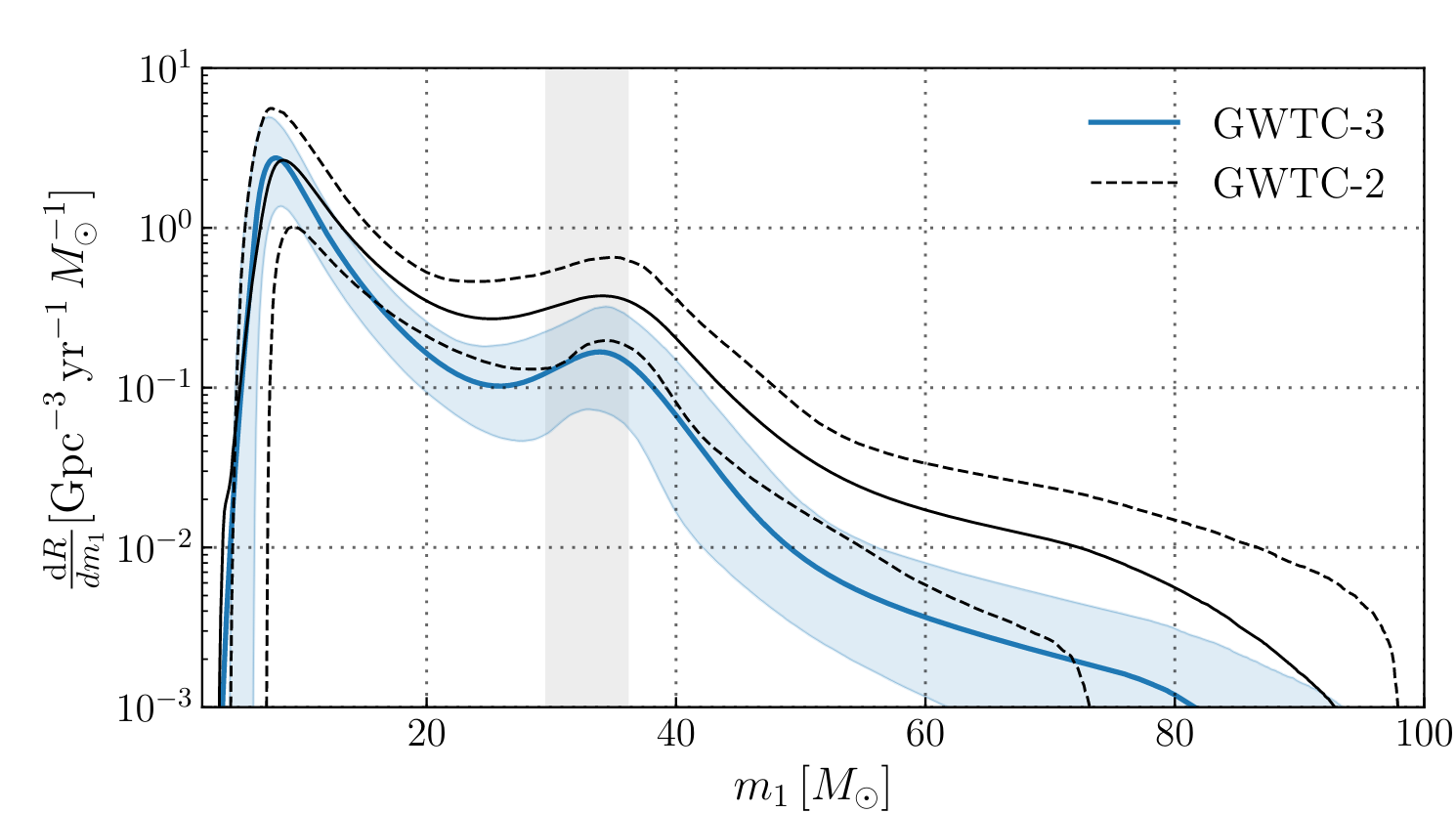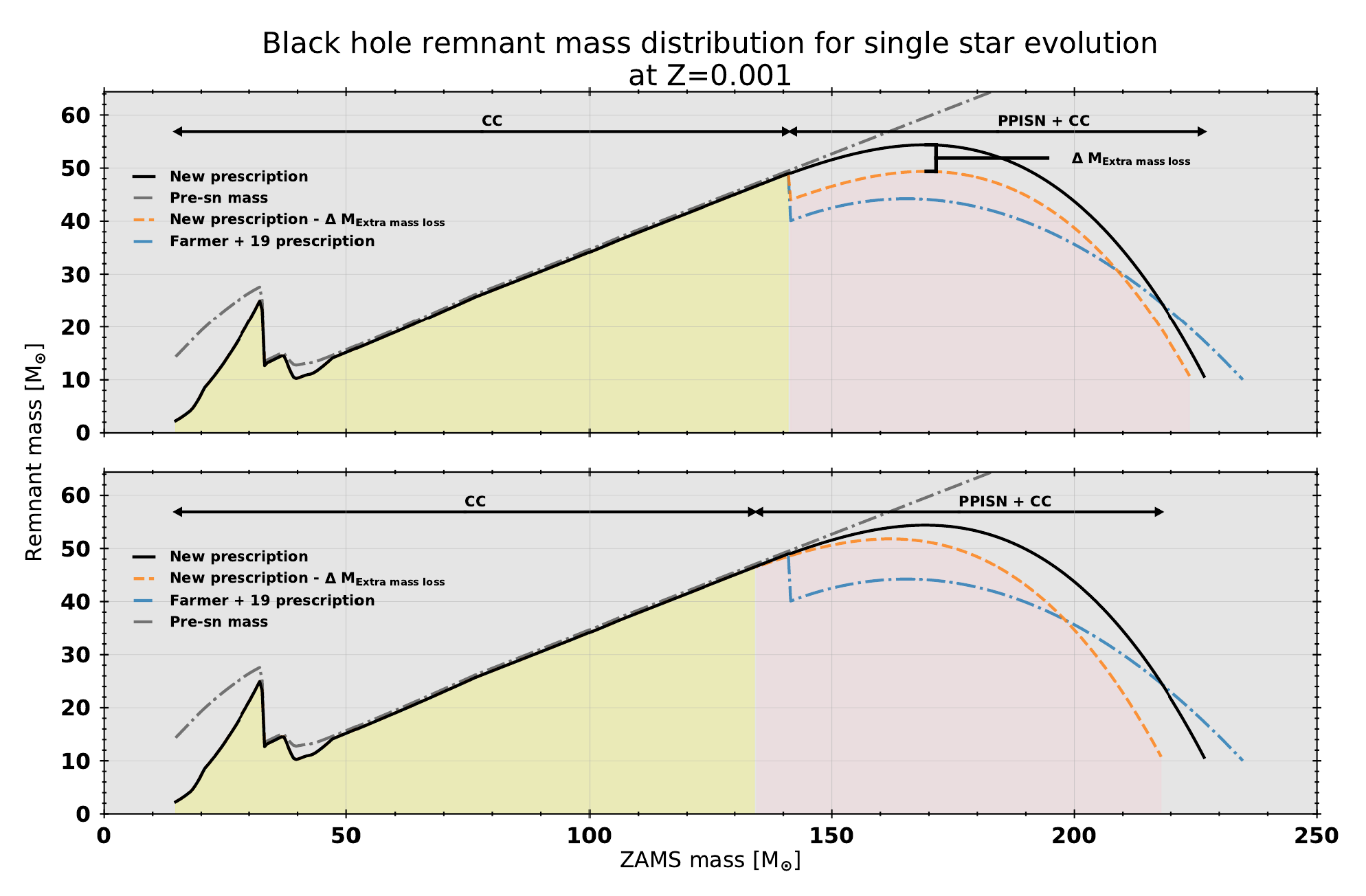Pulsational pair-instability supernovae and their effect on the black hole mass distribution
One of the main projects during my PhD was to study the effect of variations on the pulsational pair instability supernova (PPISN) routines on the primary mass distribution of observed binary black hole systems.
Current observations of merging binary black holes are uncovering structure and details in the distribution of properties of these black holes. One interesting feature is a relatively high rate of observations of systems where the primary mass has \(\sim35M_{\odot}\).

One of the potential processes that could lead to this over density is the Pulsational Pair-Instability supernovae. This supernova type effectively determines the remnant mass of a wide range of very massive stars, and limits how massive the remnant black holes can become.
In a recent research note (Renzo et al., 2022) we published an updated prescription for PPISNe mass loss. This prescription works with a “top-down approach”, and leads to a smooth transition between the remnant masses from core collapse (CC) supernovae and those of PPISNe.

We are currently writing up the project where we have implemented this new prescription in a population synthesis model, combined with contemporary cosmological star formation models to predict and match the black hole mass distribution.